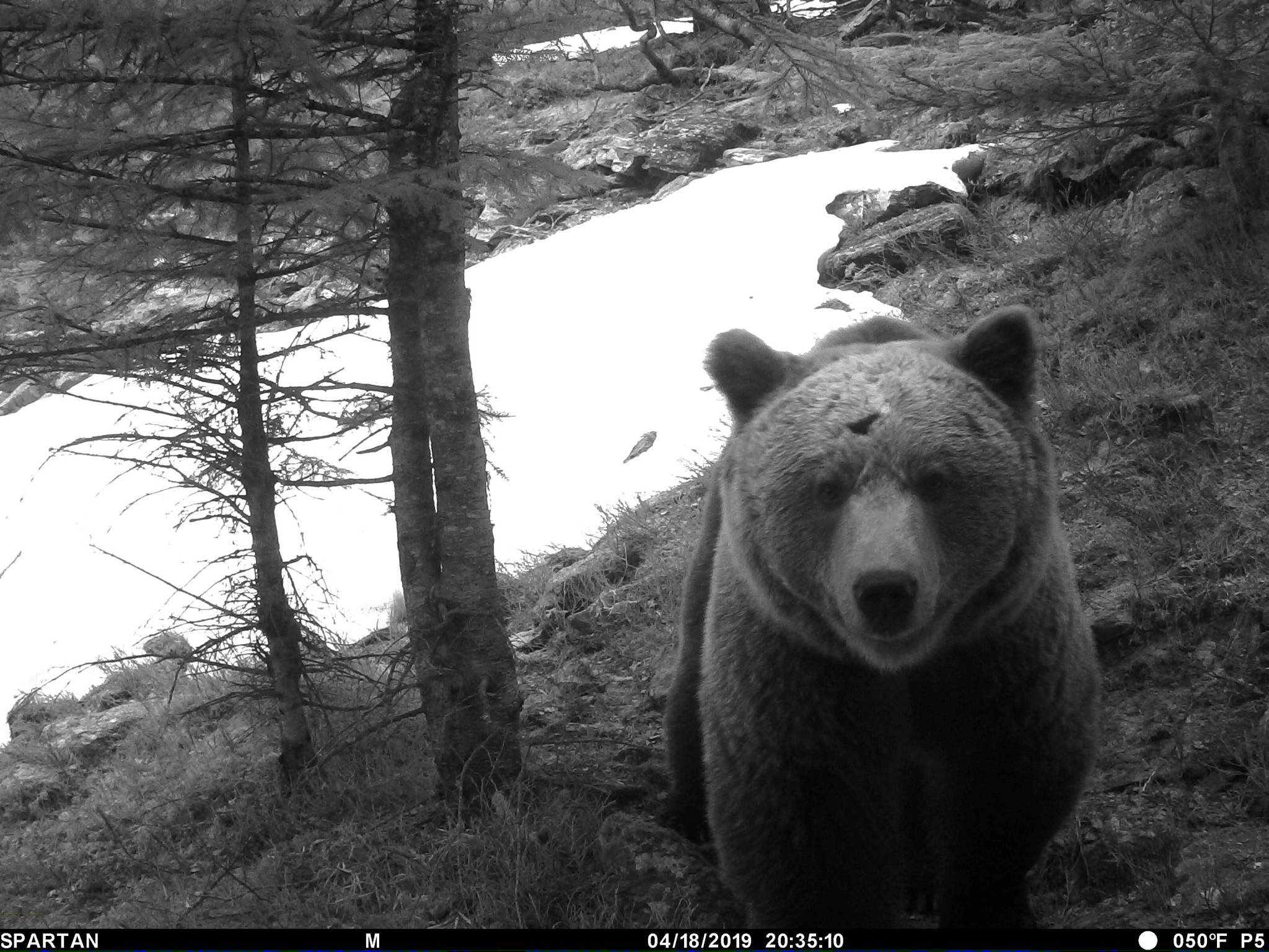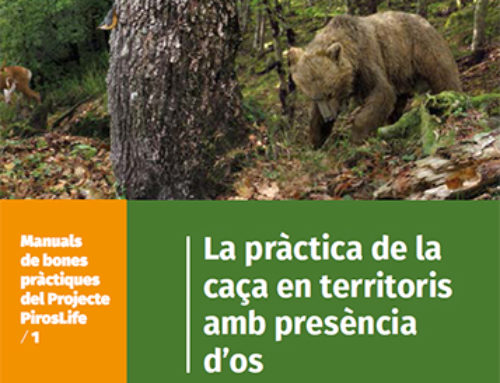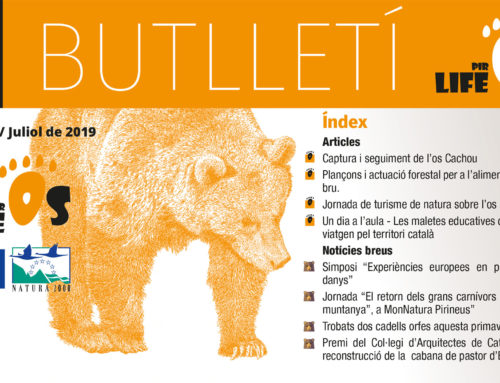- The Cross-Border Monitoring Group of the brown bear in the Pyrenees has taken stock of the conservation and monitoring of this species in 2019 in Catalonia, France, Andorra, Aragon and Navarre
- The figure represents an increase of 12 copies compared to the initial count that was made in 2018, with 40 individuals
- Last year, 10 new puppies from 5 different females were born, matching the historical record of births recorded in 2016
- The area of bear distribution also increases by 3,000 km2 more than in 2018, so that the species already extends in an area of 10,400 km 2, especially in central Pyrenees
The Cross-Border Monitoring Group of the brown bear in the Pyrenees has taken stock of the brown bear population in 2019, and of the monitoring and conservation actions carried out during the last year. It was in a telematics meeting as a result of the coronavirus health crisis, which was attended by representatives of the Generalitat, the General Council of Aran, the Government of Andorra, Aragon, Navarre, France and the Oso Pardo Foundation.
The latest figures show that the bone population now reaches 52 specimens, compared to 40 that were initially identified in 2018 (although later indications put this figure at 49 specimens). This figure corresponds to the minimum number of bones detected in a given year, and is reviewed annually. Therefore, in 2021 this initial figure of 52 copies will be revised again.
In terms of the number of births, a total of 10 new cups from 5 different females have been registered. This is a record figure, only achieved before the years 2016 and 2017, so it returns to the highest birth rates in recent years. The females that have been bred are Sorita (2 puppies), Isil (2 puppies), Caramelles (2 puppies), Bambou (2 puppies) and Fadeta (2 puppies).
Annual number of puppies born at Pyrenees between 1996 and 2019 (total= 45 litters, 82 puppies)
After more than two years without any evidence, the specimens that are considered dead during the past 2019 are 6. Among these, the female Hvala, last detected in 2017; the male Fifonet, as well as the 2 puppies of Sorita.
Majority presence in the central Pyrenees
The geographical area where has been found sometimes evidence of the presence of brown bear in the Pyrenees (and which should not be confused with the area where there is a permanent presence of these animals) has been expanded in 2019 by 3,000 km2 compared to 2018 and already represents an area of 10,400 km2. It should be noted, however, that much of this increase is due to a punctual exploratory displacement made by the male Goiat in the spring of last year, during which he visited areas far south of the Pallars Jussà and the Aragonese Ribagorça, far away of the usual areas.The area of distribution of the bear extends mainly through the central Pyrenees (7,800 km2). In the Atlantic Pyrenees, females Sorita and Claverina, and males Nere, Cannellito and Rodri have been found, especially in northeast Navarre and the French side.
Follow-up in Catalonia
Finally, with regard to the monitoring of the species in Catalonia, during 2019 were located 440 bone signs, of which 190 are photographs and videos and 141 are hair samples. Throughout Pyrenees have been found 440 signs or traces, in addition to the locations of the specimens equipped with GPS.
In addition, numerous samples for genetic identification have been analyzed, of which 78 come from Catalonia. The Universitat Autònoma de Barcelona has identified 8 copies of 20 samples received, while the French laboratory Antagene has identified 41 copies of 314 samples (58 from Catalonia).









